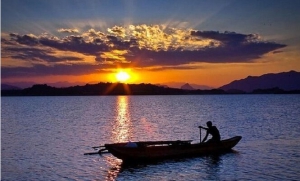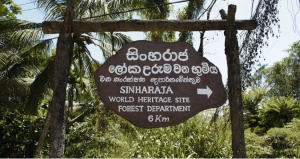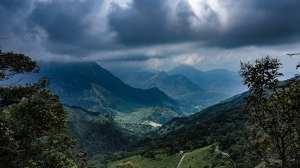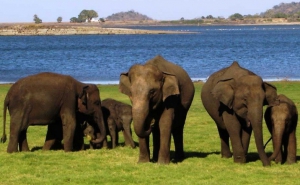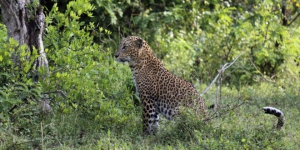Maduru Oya National Park
Maduru-Oya National Park is still an underdog among Sri Lanka's national parks, because it does not necessarily fit into the efficient travel routes and an infrastructure for accommodation has not yet been established.
If you do make your way (and we recommend it!), you will experience a feeling of Lonely Travel off the beaten tourist track. Why you should visit the park, what to see there and how to find a place to stay, you can find out here!
Landscape and animals in Maduru-Oya National Park
The park is located a little northwest of Gal Oya National Park, is about 50 hectares in size and is dominated by the large Maduru Oya Reservoir. The landscape of the national park, located in the east of the island, is charming and varied: Rocky mountains rise in the southwest, otherwise grassy plains alternate with bushes and lakes.
The wild animals in Maduru-Oya National Park are shy. Among the large mammals you can find elephants, reptiles, leopards, water buffaloes and sambar deer. Especially for ornithologists, the Maduru-Oya is an experience, it is one of the most important bird watching sites in the country, as it is home to many water birds, including the white-bellied sea eagle and cormorants. Otherwise, crested grouse, tailor birds, pubic thrush, black-headed oriole and the red-faced malkoha live there.
The park is also of archaeological and cultural importance: Again and again you will find Bhudda statues in the park and on the way there cultural relics such as temple ruins, old Buddhist shrines, Buddha statues and stupas from the various historical epochs of Sri Lanka. In Senanigala there is one of the two remaining Panchavasa temples with stupa and shrine, the Henanigala Panchawasa Raja Maha Viharaya.
Where to stay in Maduru-Oya National Park
The number of accommodations in the park is very limited, instead tourists usually stay in so-called homestays, which group tour providers can book for their guests. Maduru-Oya can be reached via Polonnaruwa (14 km away).



